GHOST STORY BLOG
Ghost Stories
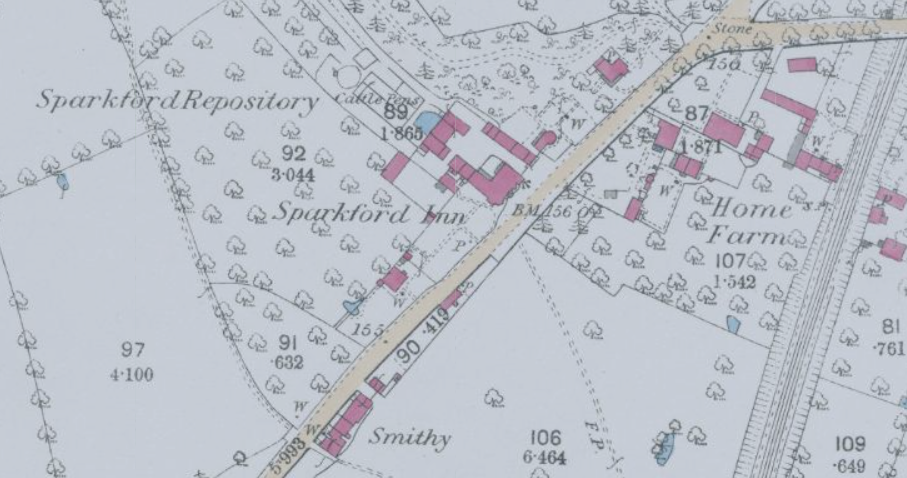
The Sparkford Inn: History and Local Legends The Sparkford Inn dates back to the 15th century and has long been an important part of the local area. Originally a coaching house, it provided food, rest, and fresh horses for travellers passing through Somerset. Over time, it continued its role as a popular hostelry, later serving those travelling along the A303 and via the nearby railway. The inn has also acted as a posting house and a meeting point for local hunters, making it a well-used social space within the community for many generations. With so many people passing through its doors over the centuries, the Sparkford Inn has developed a strong connection to local history and shared memories. Alongside its historical role, the inn is well known for a number of reported paranormal experiences. The most commonly mentioned is the ghost of a young boy, believed to be around seven years old, who is said to run through the bar, pool room, and dining area. He is often described as giggling and wearing scorched clothing, with visible burns. Other unexplained activity has also been reported, including whispers heard in empty rooms and mild poltergeist behaviour such as objects moving or appliances switching themselves on and off. In addition, the presence of a man and a woman is said to be associated with one of the rooms. These stories have led to investigations into the inn’s haunted reputation and remain part of its ongoing local legend. Have you ever heard of, or experienced, any ghostly encounters at the Sparkford Inn? © Somerset Paranormal Image created by PJW Artworks
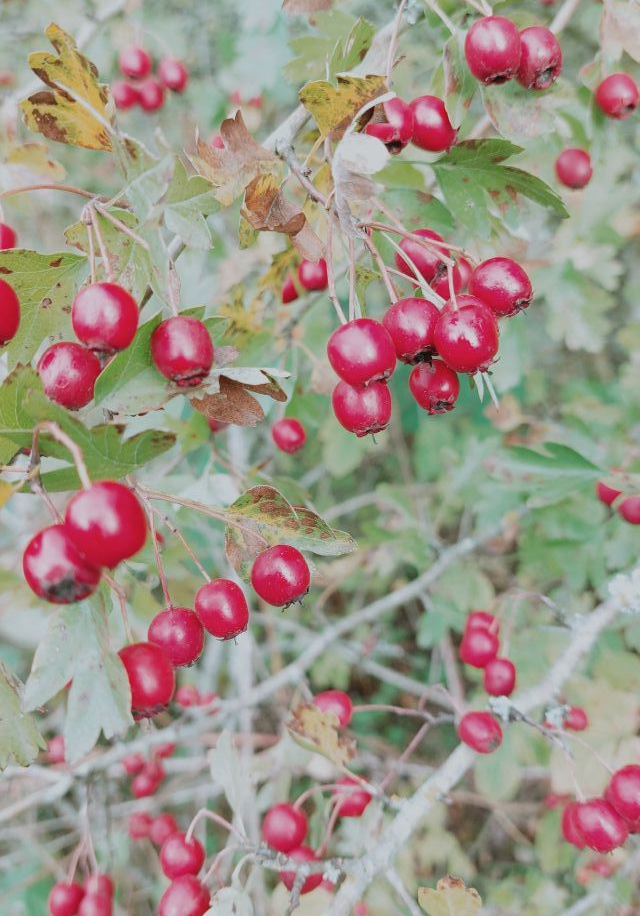
The Enchanted Hawthorn: Somerset’s Tree of Fairies and Protection In Somerset and across Britain, the humble hawthorn (Crataegus monogyna) weaves its thorny branches deep into local folklore. Revered and feared in equal measure, it stands at the crossroads of magic and faith—guarding thresholds, sacred wells, and the edges of fairy realms. The Miracle of the Glastonbury Thorn Perhaps the most famous hawthorn of all grows—or once grew—upon Wearyall Hill in Glastonbury. Legend tells that Joseph of Arimathea, arriving in England after the Crucifixion, planted his staff into the Somerset soil. Miraculously, it took root and blossomed—flowering not once, but twice a year: in May and again at Christmas. This “Glastonbury Holy Thorn” became a cherished symbol of divine grace, with a sprig from its descendant still sent to the monarch each Christmas. The Fairy Tree In broader folklore, hawthorn trees are known as “fairy trees”, said to belong to the fae themselves. Lone hawthorns standing in fields or by wells were often left untouched, for fear of offending the otherworldly beings who guarded them. These trees marked boundaries between worlds—places where the veil between the human and the magical grew thin. Many country folk would leave offerings or tie cloth strips, known as clooties, to their branches in hope of a blessing or a wish granted. A Protector in Bloom Despite its delicate blossoms, hawthorn has long been viewed as a tree of protection. It was planted beside homes to ward off lightning and evil spirits, and carrying a sprig was said to keep travellers safe. Yet its power was treated with care: while hawthorn flowers decked the garlands of May Day celebrations, bringing them indoors at any other time was thought to invite death or misfortune. Hawthorn also played a part in hand-fasting rituals, its blossoms symbolising love that endures through both joy and hardship—much like the tree itself, beautiful yet thorned. A Symbol of Thresholds Whether sacred to fairies, blessed by saints, or cherished for its protection, the hawthorn stands as a living symbol of liminality—where life and death, blessing and curse, heaven and earth all meet beneath its boughs. To this day, it blooms as a reminder that even the simplest hedge can hold the heart of a legend. Somerset History and Mystery Image - Somerset Photography

They moved to the village in the spring of 1952, when the hedgerows were just beginning to flower and the air still carried the faint chill of winter. Arthur and Lillian made their home in a low, ivy-clad cottage on the edge of the village green, where the ancient ruined castle loomed over the village like a wounded sentinel. The locals spoke of the castle with the careful hush of those who know better than to invite attention. It had been shelled during the Civil War — a jagged rent in the south wall showed where the cannonball struck, still blackened after three centuries. Yet older evils lingered there too: the witch trials, the whispered confessions, the women led weeping to the moat. Lillian was fond of walking in the evenings, her cardigan buttoned tight, listening to the soft thud of her shoes on the damp lane. The castle drew her — she said it had a sadness about it, like something forgotten but not gone. Sometimes, as dusk fell, she fancied she heard voices by the water, a low murmuring as if the reeds themselves whispered. One night Lillian woke to find the room filled with pale light. From the window she saw her — a woman in flowing white robes gliding across the moat, her head bowed, her hair silvered by moonlight. Lillian thought at first it was reflection, until the figure paused and turned as though sensing she was seen. Her face was lost in shadow, but the impression was of infinite sorrow — and something pleading. Arthur dismissed it as a dream until, a week later, he came in white-faced from the pub, swearing he’d seen a mounted knight pass silently through the square. The horse’s hooves made no sound; its rider was head bowed, the armour dulled by centuries of dust. After that, things changed. Footsteps creaked on the stairs though neither moved, voices — indistinct, pleading, angry — seeped through the night air. Once, during a sleepless, restless Summer night, Arthur stepped outside to breathe in the crisp, ghostly air of the witching hours. Behind him, he glimpsed the faint outline of a grand hall, its walls bathed in flickering torchlight. Shadows of dark, floating figures drifted through the space, while faint strains of music and laughter echoed, as if an ancient celebration were replaying itself in the still of the night. The scene felt suspended between past and present, a secret revelry hidden from the waking world. Drawn by an irresistible curiosity, Arthur moved closer, and the outline resolved into a magnificent castle rising from the edge of a glimmering moat. Its stone walls shimmered under the moonlight, and the water reflected the phantom torches with a trembling glow. Every ripple seemed to whisper the stories of lords and ladies long gone, their mirth and sorrow intertwining in a haunting symphony. Arthur felt as though he had stepped into a memory etched into the very stones, a place where time itself paused to watch and listen. By autumn, the couple had grown accustomed to the castle’s presence. The ghostly whispers and fleeting shapes became part of the quiet rhythm of the village, strange companions rather than threats. They would walk by the moat together at dusk, sometimes catching a glimpse of the pale-robed woman and smile at each other, sharing a shiver that was equal parts fear and fascination. Though the ruins held the weight of centuries and sorrow, life went on. The villagers eventually accepted the couple, and the castle — scarred, mysterious, haunted — remained a reminder that the past is never truly gone and sometimes, on quiet nights, Arthur and Lillian would pause by the moat and hear the softest echo of a distant horse, or the faintest sigh of someone longing for the light — a reminder that even in darkness, there is a strange, enduring beauty. Footnote: While Lillian and Arthur are figments of imagination, the castle itself stands in reality, and the eerie lights, shadows, and unexplained occurrences that inspired this tale are drawn from true ghostly accounts associated with its ancient halls and the surrounding village . © P Wallace - Somerset Paranormal Image © PJW Artworks

Punkie Night: A Somerset Spectre’s Tradition When the last Thursday of October descends upon Somerset, the air grows chill and the fields of the West Country whisper with an ancient song. For on this night—Punkie Night—children parade through the lanes, their faces lit by the flickering glow of hollowed roots. They chant a haunting refrain that echoes through the darkness: "It’s Punkie Night tonight, It’s Punkie Night tonight, Adam and Eve would not believe, It’s Punkie Night tonight." No soul can say for certain how this eerie rite began. Some claim it is bound to Hallowe’en itself, that night when the veil between worlds thins. The word “Punkie”—an old English name for a lantern—hints at the light that defies the shadows. But unlike the modern pumpkin, these lanterns were once carved from swedes or mangel-wurzels, their twisted grins glowing from pale, gnarled flesh. Others whisper that Punkie stems from punk—tinder that sparks fire—perhaps a clue to the old ways now half-forgotten. Across the centuries, the custom has glimmered in many places: upon the windswept crest of Castle Neroche in the Blackdown Hills, through Long Sutton, and most enduringly, in Hinton St George and Lopen, where the night still belongs to the Punkies. The Legends Behind the Lanterns Local lore tells of the men of Hinton St George, who would vanish to the fair at nearby Chiselborough, returning home drunk and stumbling through the black October night. To find their way, they set candles within hollowed roots, their makeshift lights bobbing eerily in the mist. Yet some tales turn the story on its head. They say it was the women who carved the lanterns—fashioning Punkies from the harvest’s remains—and went searching for their wayward husbands. Some even knocked at doors, begging for mangel-wurzels and candles, their plea giving birth to the Punkie Night song that still drifts through village lanes. Others tell that when the drunken men glimpsed those ghostly lights, they mistook them for spirits or “ghoulies,” fleeing home in terror—proof that even the living may be haunted by their own folly. Though cloaked in folklore, the roots of Punkie Night stretch much deeper—a flicker of Samhain’s ancient fire, carried down through the centuries. It is a night when the old world breathes again, when lanterns gleam like souls in the dark, and the West Country remembers that not all lights are meant to guide the living. ©Somerset Paranormal #punkienight #somersetfolklore #somersettraditions #somersetpunkienight #Halloween #halloweentraditions
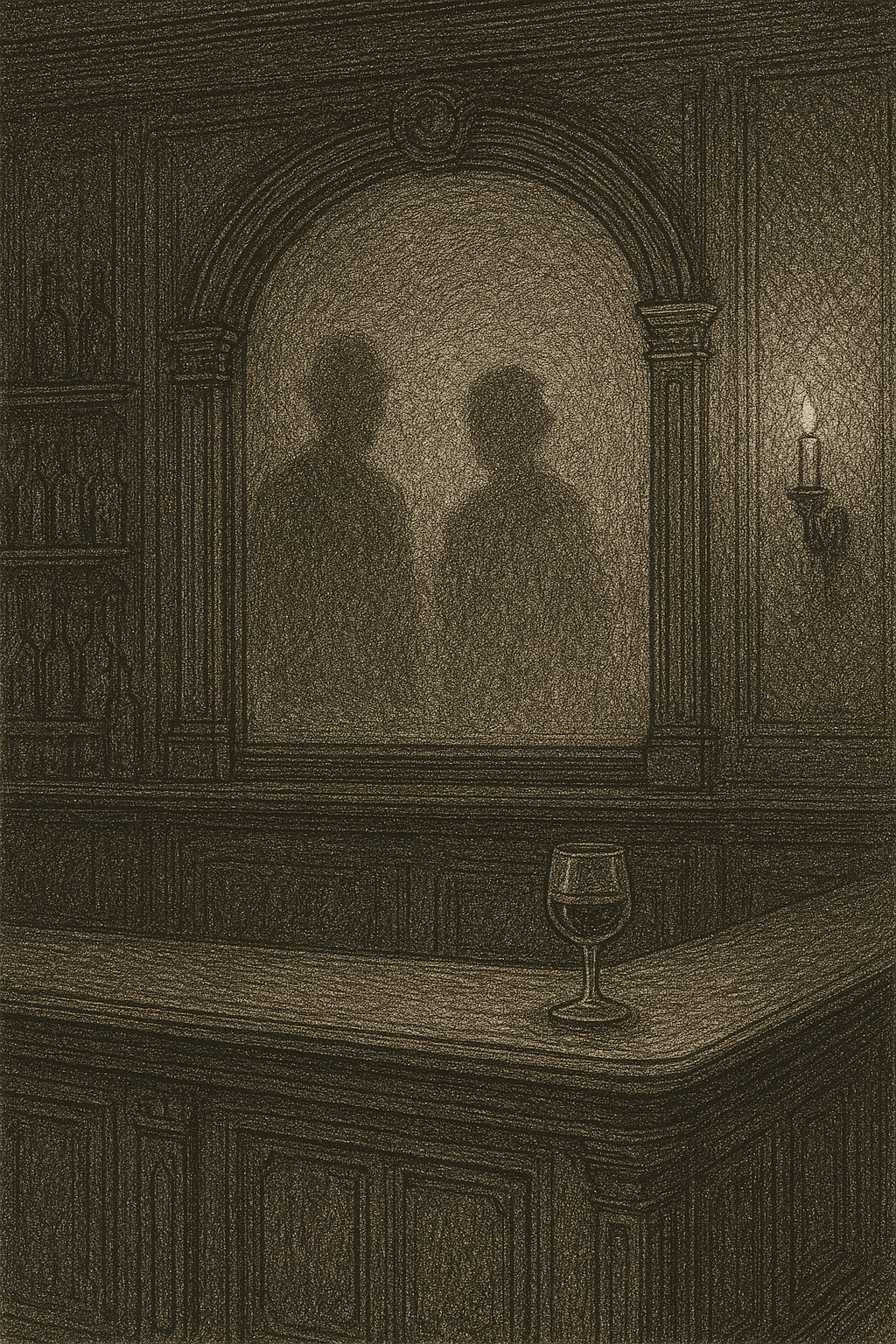
For this Halloween I thought I would try something a bit different and try my hand at writing a ghost story. This semi fiction story is set in a location in Bath, in the mid to late 1990's and is based on some real life events and experiences by real people in that location over the years, with names changed and with a little help from AI to bring it to life. The Customers that never left.... The restaurant in one of Baths most historical and affluent areas had opened only six months before, its proprietors keen to boast that it was “modern dining within a piece of Bath’s history.” The building had once been Elliston & Co, a grand department store frequented by the city’s most fashionable ladies and in its heyday a destination for royalty. Though the marble counters and mahogany cabinets had long since been replaced by gleaming tables and silver cutlery, the air still carried the faint scent of lavender polish and time. It was a handsome space — lofty windows, ornate plasterwork, and a graceful wooden staircase curving to a mezzanine bar. Yet after closing, when the laughter and the music had faded, the building changed. Its echoes lengthened, its shadows grew bold, and the staff began to whisper. The first to notice was the chef, a practical man with no patience for tales. One regular early Friday morning, while prepping for the busy day ahead, he heard a sharp rapping upon the long window that was between the kitchen and restaurant, at that point in time it was covered over to conceal the kitchen from the restaurant and distractions beyond. Three loud booming knocks — slow, deliberate, as though delivered by a gloved hand. He froze, the knife slipping from his fingers. Beyond the glass lay the empty restaurant, still as a grave in the early morning, as he was the only living soul in the building. When he pressed his palm to the glass, it stung with cold, though the room behind him was warm. A week later, the waitress — a timid girl named Lisa — began to complain of a presence that followed her after hours. She could feel it when she moved between the tables to polish cutlery or gather napkins. It was not merely unease, but the distinct impression of someone standing close behind her, breathing softly. Once she turned so swiftly that her ponytail whipped her shoulder, and she caught a whiff of violets — an old perfume, cloying yet delicate, gone almost before she noticed. The bar staff laughed, until they too began to hear the footsteps . They came from the wide original stairwell that led from the front door, slow and measured — the step of a man ascending while carrying a heavy load. Each night the tread reached the landing, paused, and faded. When the barman dared to go and have a look, the stairs lay empty, though the air was thick with the smell of dust and old cloth. Their manager, a Bath native with a fondness for local history, began to enquire. The archives told him that in 1924, Elliston & Co. had suffered two tragedies. A lady shopper, overcome by some sudden seizure, had died in the shoe department before assistance could be fetched. Not three months later, a gentleman clerk had fallen from a stockroom ladder and broken his neck. There had been talk of ill luck, then the matter was quietly forgotten. After that discovery, the staff grew more cautious. They never spoke openly of “ghosts,” yet a silent understanding spread among them. The waitress avoided the far end of the dining room after midnight; the barman never went down to the cellar alone, as that was also a very scary dark and frightening area with a heavy oppressive feeling as it was under the very old vaults at the bottom of the building. The chef, though he mocked them all, had begun to whistle as he worked — but after that one day, the knocking never happened again to his knowledge. But things were about to take an even spookier turn- One November night, a heavy fog crept up from the river. The city’s lights burned dimly behind it, and within Elliston’s Restaurant, the world felt muffled and apart. The staff lingered after closing, reluctant to step outside. The bar lights glowed low, the last glasses polished. Then came the footsteps again — clear, deliberate, climbing the stair from the cellar. Everyone froze. The barman exchanged a glance with Lisa, whose face had gone pale as milk. Slowly, he crossed the floor and opened the door, then within it, the faint outline of a man appeared — tall, stooped slightly at the shoulders, dressed in dark waistcoat and rolled shirtsleeves. He ascended the final step and halted, looking about as though puzzled to find strangers in his place of work. The light flickered against his face, and they saw it was drained of all colour, like smoke trapped in glass. Behind him, the faint rustle of skirts drifted from the hallway. A woman’s figure emerged, an older lady pale and fine-boned, her hat pinned neatly, her gloved hand resting upon a small handbag. Her gaze travelled over the dining room — the tables, the linen, the flickering candle on the bar — with mild curiosity, as though seeking something once familiar. The chef dropped his towel. Lucy gave a small gasp. The lady turned toward the sound, her expression gentle, uncertain. “Excuse me,” she said softly, her voice the faintest echo of air through silk, “might you direct me to the haberdashery?” No one answered. The barman could only nod toward the stairwell. The lady inclined her head with a gracious smile, then turned to the ghostly clerk beside her. Together they descended the steps, the air growing still in their wake. When at last the fog cleared and silence returned, the staff stood motionless for some time. Then the chef, in a trembling hand, poured a small glass of sherry and set it upon the counter beneath the mirror. It became a custom after that — a quiet offering whenever the lights dimmed and the building creaked with memory. The mirror above the bar, once bright, now held a faint smudge that no polishing could remove — two silhouettes side by side, caught forever in the reflection. And though Elliston’s no longer sold gloves or silks, those who worked the late shifts swore that, sometimes, in the hush before dawn, the scent of violets still drifted through the room. For even now, the last customers had yet to leave. © PWallace/ Bath & Somerset Paranormal Images © Somerset Paranormal
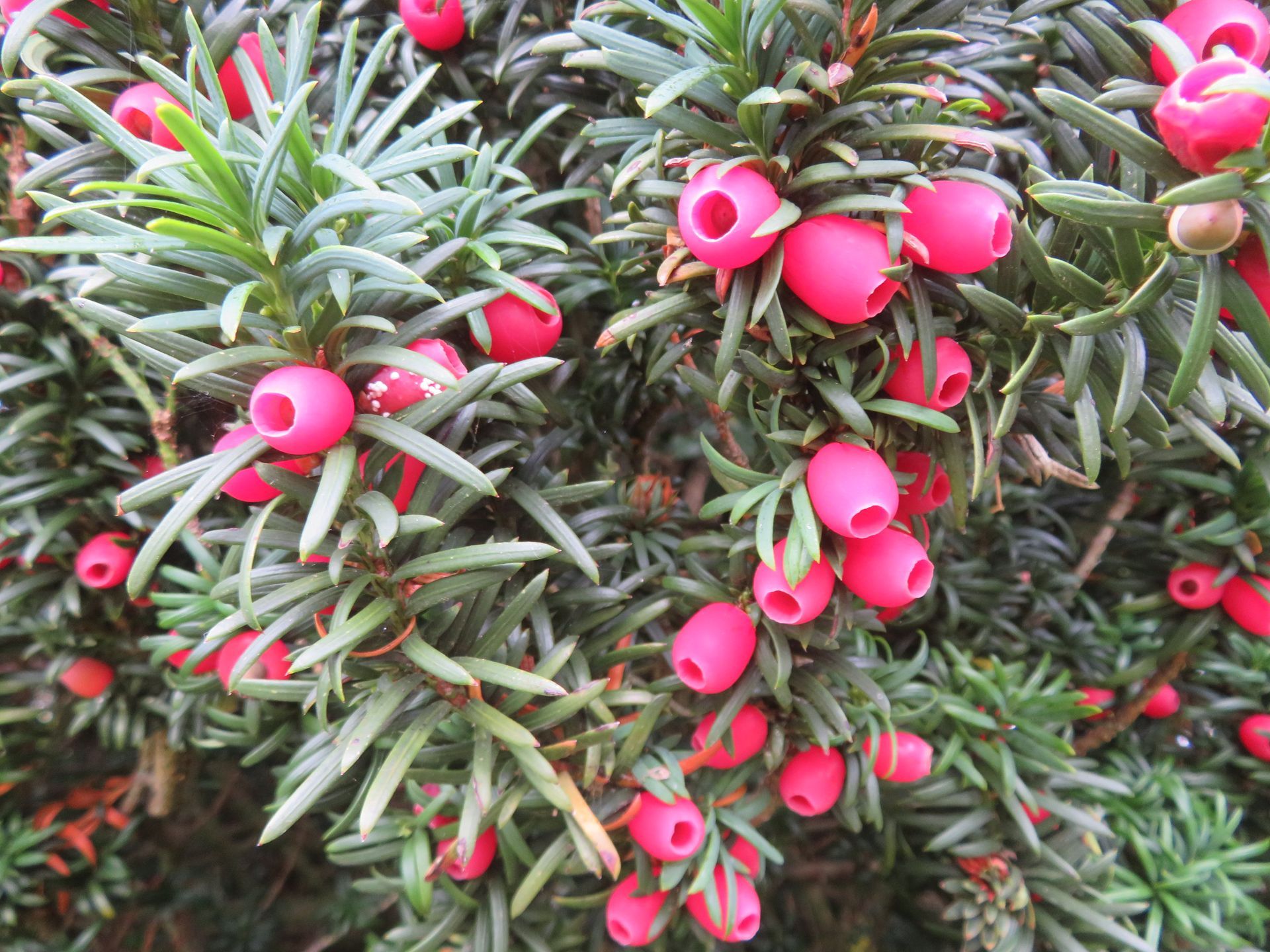
The Mystical Yews of Somerset In Somerset’s folklore, the yew tree stands as both guardian and gatekeeper — an ancient sentinel woven into myths of death, rebirth, and the unseen worlds beyond. Whispered tales speak of yews as living thresholds to the underworld, their roots said to intertwine with the bones of the dead, binding life and death in an eternal embrace. One local legend even tells of a Devil’s pact that prevented a hundredth yew from ever growing in a churchyard, ensuring the balance between sacred and infernal remained unbroken. For centuries, yews have been planted beside graves and church walls, their dark evergreen boughs symbolising immortality, resurrection, and protection from evil. To the ancients, their longevity was proof of otherworldly power — a living bridge between mortal and divine. Symbolic Associations Gateway to the Underworld: Revered for their age and proximity to death, yews were seen as portals between this world and the next. Immortality: Evergreen and enduring, the yew embodies eternal life — a symbol of unending renewal and the spirit’s persistence beyond decay. Death and Resurrection: With its capacity to regenerate from seemingly lifeless wood, the yew mirrors the eternal cycle of dying and rebirth so central to Celtic belief. Protection: Churchyards were often planted with yews to guard against malevolent spirits, their sacred presence believed to purify the resting dead. Somerset’s Local Lore The Chilcompton Yew: This ancient tree is said to mark a place where the dying once came to pass into the next world — a site where mortal breath faded into ancestral spirit. Some call it a “gateway tree,” where souls crossed from life into legend. The ancient yew tree at Chilcompton church is estimated to be over 1,800 years old. (first photo) The 99 Yew Trees Legend: While best known at St. Mary’s in Painswick, the tale echoes through Somerset’s sacred groves. It is said that when the ninety-ninth yew was planted, the Devil himself forbade the hundredth to grow, cursing any attempt to complete the number. The yew tree at Holcombe Old Church is believed to be around 1,500 years old. It is estimated to have existed even before the Norman church, which was consecrated in 928 AD (third photo) Across Britain, such stories remind us that the yew’s presence is as much spiritual as it is botanical — a symbol of balance between light and shadow. Other Folklore The yew’s poisonous beauty has long inspired awe and fear. Witches were said to use its wood and needles in dark workings, while travellers were warned of the vapours that gathered beneath its branches. In old graveyard lore, it was whispered that yew roots crept through the eye sockets of the buried dead — holding them in place and binding their spirits to sacred ground. Yew trees were the preferred material for making English longbows because of their strength and flexibility. The wood's combination of hard, compression-resistant heartwood and flexible, tension-resistant sapwood was ideal for a longbow, and yew was used for centuries, contributing to English military success and played a crucial role in English victories during the Hundred Years' War at battles like Crecy, Poitiers, and Agincourt. © Somerset History & Mystery Images - Somerset Photography St Vigors - Stratton on the Fosse St Johns - Chilcompton St Andrews - Mells Old Church - Holcombe

The Dual Magic of the Blackthorn: Somerset’s Dark and Sacred Tree In Somerset folklore, the blackthorn tree (Prunus spinosa) walks a fine line between the sacred and the sinister. Its gnarled branches and cruel thorns have long stirred both fear and fascination—earning it a place in local legends as a tree of witches, fairies, and miracles alike. Witchcraft and Dark Omens: Dark, twisted, and defensive by nature, the blackthorn has long been woven into tales of witchcraft and ill fate. Folklore holds that witches fashioned their wands and staffs from its wood—its spines said to carry curses or even draw blood for dark spells. To stumble upon a blackthorn grove at night was once thought a bad omen, a warning that the old magic of the woods still lingered. Winter, Fairies, and the Dark Mother: In Celtic lore, the blackthorn belongs to Cailleach, the ancient winter goddess. Wielding a blackthorn staff, she was said to stir up storms and frost until spring’s return. In Somerset, this connection deepened the tree’s mystical status: to harm or cut it without cause risked offending the fairies said to dwell among its branches. Despite its thorns, however, blackthorn wood was also carried as protection—walking sticks made from it were thought to guard their bearer against evil. A Tree of Shadows and Light: Feared as a witch’s ally yet revered as a bearer of miracles, the blackthorn embodies the dual nature of old English magic. In its dark thickets lies both danger and blessing—a reminder that in folklore, as in nature, beauty and power often dwell side by side. For more like this check out my Facebook page - h ttps://www.facebook.com/SomersetBathHistoryandMystery/ Image - Somerset Photography #folklore #somerset #somersetfolklore #magic

Hello everyone, thank you to anyone who is a regular visitor to my blog, and apologies for the lack of new material lately. Its been a quiet Summer and sadly it seems there are not very many new ghost stories and experiences to unearth and share with you lately. I would rather share new and exciting paranormal locations and stories than rehash over the same places... So with that in mind, does anyone out there have a spooky, chilling or strange tale to tell? Maybe a unforgettable strange experience at your workplace, have you visited somewhere in Somerset and left with a chill down your back and thoughts of 'What was that ? Or have you recently heard a local ghostly story that has been whispered through generations and has just come to light ? I am looking for guest writers and people who wish to share their most spine-tingling paranormal experiences, have you seen something you cant explain this year? Along with taking a deep dive into the historical details and research around your location and experience, your story could be featured on my Facebook pages and this blog, bringing your account to a captivated audience of fellow believers and curious minds and added to my ever growing journal of paranormal experiences in Somerset. Full credit can be given, or you may choose to remain anonymous. Keeping location in secrecy is perfectly acceptable if that’s your wish. I am interested in the areas around Bath and North East Somerset, Mendips, Wells, Frome, Midsomer Norton mainly. If you’re intrigued and just want to offload and share, simply send me an email... somersetparanormal@yahoo.com Thank you .. Artwork - PJW Artworks
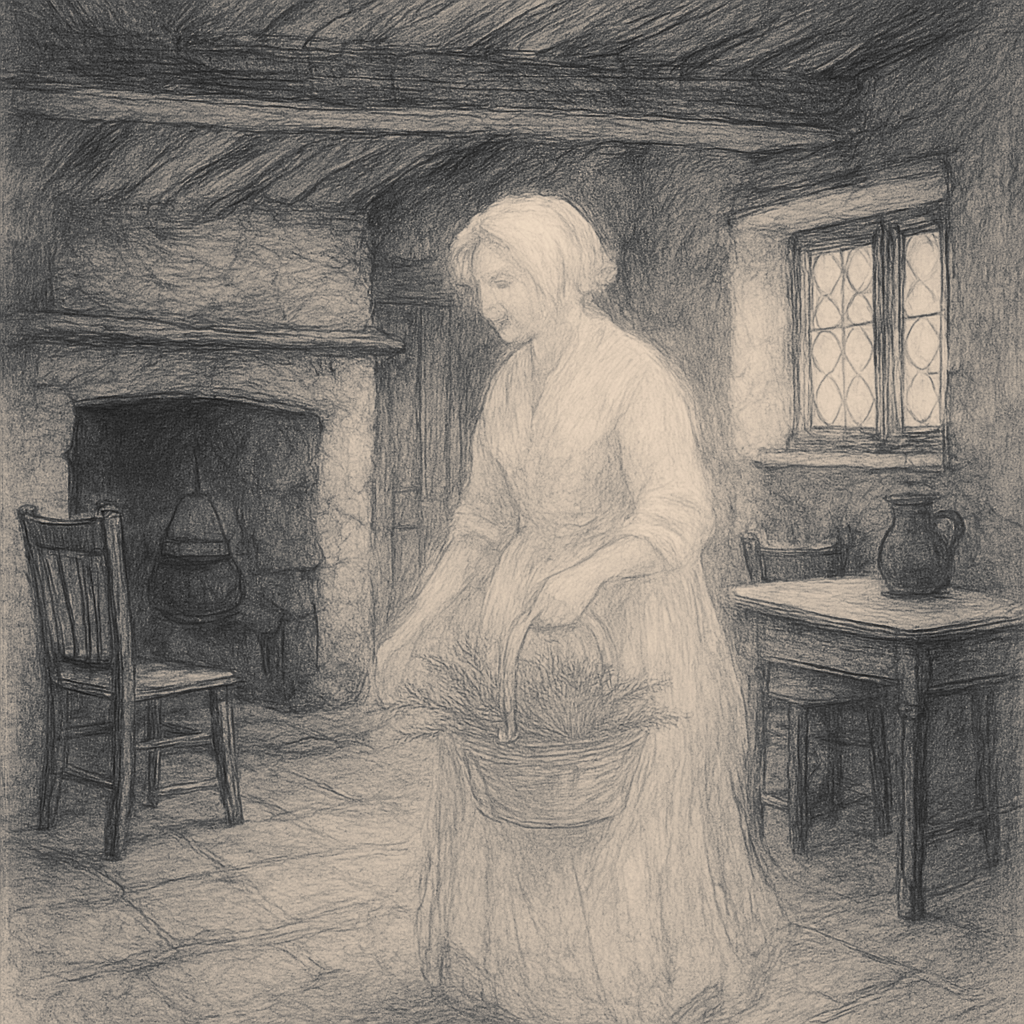
A Somerset Ghost Story from an Anonymous Contributor, in their own words.. In 1978 (I believe Saturday September 23rd) a friend and I booked a weeks holiday in Somerset, in an old farm cottage, for the week fishing. The holiday started off a little strangely in as much that, my friend being an excellent map reader, couldn't find the house we wanted...even though we knew we were on the right road, in the correct area. We had approximate directions from the owners to their home, knowing the house was very close and on the main road. We went to the owners property a mile or so 'down the road' at the arranged time. We were taken by the lady owner to the house we were staying in and very briefly told where all the rooms were...and the lady was gone. I don't mean she vanished, she just left abruptly. Though we didn't think much of it at the time, we did later agree it was a bit 'odd'. The cottage was clean but rather old fashioned. We had a look around and decided on the twin bedded room to dump our cases of clothes. Having eaten we set off for the first fishing session. It was late September and I guess we returned to the house around 10pm. We sat in the lounge eating supper while watching (I think) the news (or a movie) on TV. We sat on the couch with our backs to the stairs wall, at each end of the couch was a door. The one on my friends side led to the kitchen, the bathroom and outside. The door on my side led to the bottom of the stairs, the front door, then through to the dining room, a door here led through to the kitchen. The door on my friends side (leading to the kitchen and then outside) clicked open by itself and opened fully. I think we both expected someone to come into the room. My friend leaned over and pushed the door closed. (I really can't recall if it opened again later though something tells me it did). Then the bumping started on the stairs. It sounded rather like someone had dropped a ball down the stairs...hitting some steps and missing others in an irregular pattern. I cannot remember now how long this bumping continued for, some time I think, as in hours rather than minutes. At the time we thought perhaps an animal was in the house somewhere. We had opened the window in the twin bedded room a little as it was a bit stuffy in there (before we went off fishing). We decided we'd wait for daylight to go upstairs and investigate! but got no sleep that first (Saturday) night, sitting up on the couch all night, listening. When daylight came we went fishing, returning about mid day. On returning we checked around the house and found nothing out of place. We closed the window we had opened in the bedroom, then ate and went off fishing again, returning again around 10 pm or so. We got supper and lit the fire in the lounge as the nights were getting colder. We had placed a suitcase by each of the lounge doors so they couldn't open again without moving a case. The bumping started around 11pm and sounded the same as the previous night. (The memory plays tricks but I believe it went on for some hours). We hadn't been up the stairs again and there was no central heating to make pipes rattle etc. I slept for an hour while my friend stayed awake. (I'd done all the driving and needed desperately to get some sleep). After an hour my friend woke me and we went into the kitchen together to make tea. He told me that while I was asleep he got the impression someone walked through the lounge with a basket of lavender. He said it was a strong, heavy smell though he saw nothing and apparently, also while I slept he was putting logs on the fire when he felt a 'pushing' from behind . I stayed awake while he got an hours sleep. Well, that was the plan but I fell asleep too and was rudely awoken by him swearing at me for dozing off! We stayed awake all night after this and went fishing when the sun was up (It was now Monday morning). Returning to the house in daylight, the place was fine. My friend went first into the bathroom to clean up while I made tea and then strolled around the garden taking a few pictures (it was 35mm film in those days, not digital!). There were some nice views across the Kings Sedgemoor area. I pointed the camera towards the rear of the house and thought I saw my friend in an upstairs window. I went into the house and called to him up the stairs...he answered from the bathroom which was adjoined to the kitchen. He came out when I called him and he was still dripping wet. He assured me he wouldn't have gone up the stairs for anything. (I believe him and neither would I have!). (Years later he confided that one afternoon he too had been walking around taking pictures and he thought he saw 'someone' in the same bedroom window...it wasn't me!) It was my turn for the bathroom while he prepared a meal, we ate and lounged around for a while then went fishing. As usual we returned around 10 pm. Also as usual we sat in the lounge eating supper when the bumping started again. My memory says it was louder and more persistent this night. We were both getting really tired by now and rather irritable. By 1am we'd had enough and decided it was time to face whatever was causing this bumping on the stairs. I had my fishing knife on my belt so I pulled it and grabbed a torch, he got the long heavy poker from the fireplace. (yes we still thought the noise was natural, not even really thinking paranormal). I opened the door to the stairs and reached around, fumbling for the light switch, the bumping stopped. I led the way and headed up the stairs, it was lit but only by very dim bulbs. We checked the bedroom we had intended using and all was ok. We moved onto the little single room (the one I thought I'd seen my friend in in the afternoon)...nothing. Closing the door we moved to the big old fashioned main bedroom. While my friend stood on the top of the stairs I edged into the room...once I'd flicked the dim light on, my friend followed me into the doorway. I looked under the big old bed and then walked around the foot of the bed toward the big old wardrobe. With my torch in one hand and knife in the other I reached out for the door handles. FLASH....BANG....DARKNESS AND BUMP BUMP BUMP ON THE STAIRS. I was around the bed and down the stairs in what seemed like one second. I don't recall either of us saying anything. We walked side by side out of that place, across the yard to the car and drove away. I can't recall now if we even bothered locking the back door. We spent the night in a layby about a mile away and slept peacefully and returned to the house at daybreak, Tuesday morning. As I said, by daylight the place wasn't so 'creepy'. We went upstairs to the main room. A quick look showed us what had gone down. The wiring to the light over the bed was old, it was the type which was covered in a woven fabric! The light socket had shorted out, the socket blew off, smashing the bulb on the bed. That was the flash, bang and darkness covered. (This caused all the upstairs lights to go out ((it's a ring main)). The bumping on the stairs was my friend legging it downstairs. Good thing he did too because, had he stayed on the landing in almost total darkness, he would have been faced with the vision of a wild eyed lunatic with a knife and a flashing light coming at him through the darkness...and he might have hit me with that damned poker! The rest of the week we slept at nights in that layby, we departed at the weekend, telling the owners about the light but we didn't mention the rest of it. Before we left we collected a load of conkers (off the chestnut trees in the garden) for my friend's younger brother. (Look up 'conkers' online for a definition of the game). He put the conkers below his laundry in a shopping bag. Saturday night / Sunday morning back at his home, my friend sat with a cup of tea by the fireplace...sorting his clothes to be washed the next day. The silver candlestick on the mantle fell off and into the top of the bag containing the conkers. Later that night / early hours of Sunday, while settling the coal fire for the night my friend felt like someone was pushing him from behind...but everyone was in bed asleep. (This was the second time this sort of thing happened to him). It would be 1985 when my friend and I and his wife and baby took another holiday in Somerset, this time the cottage we hired was much friendlier. We were at Burnham on Sea and on the Wednesday we decided to take a ride to the Cheddar Gorge, a few miles away. On the way back they were all dozing while I drove. After a while I got the feeling I knew this area and recognised a few landmarks. I said to my friend "do you know where we are?"...... He rolled up his sleeve, showing me the vertical hairs on his arm..."Yeah I know where we are"!!.... as we drove past the cottage from years before. Thank you to the anonymous contributor for this very interesting story. Image - Somerset Paranormal/ PJW Artworks
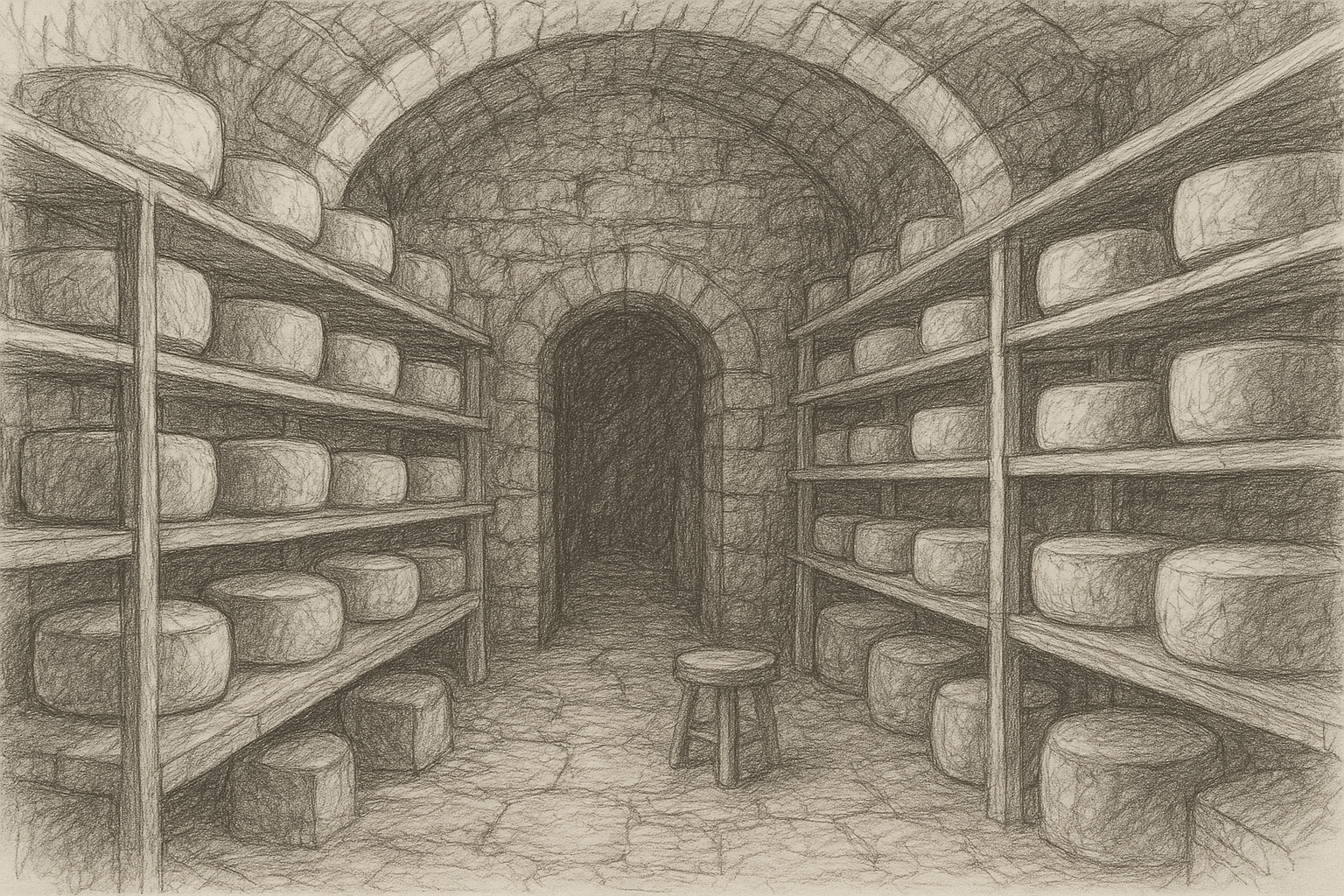
Witham Friary, Somerset – Farmhouse Incident Late 19th Century A curious and unsettling presence is said to have taken hold in the cheese room of a farmhouse near Witham Friary. Chairs were hurled across the space, ornaments trembled and clattered without cause, and the disturbances grew so intense that the room was eventually abandoned altogether. Local lore attributes the activity to the restless spirit of a servant girl who tragically took her own life in that very room. Has anyone ever heard of this before in the area> or knpw of any other haintings in Witham Friary. Source: Paranormal Database Images - Somerset Paranormal & Know your place maps 1888